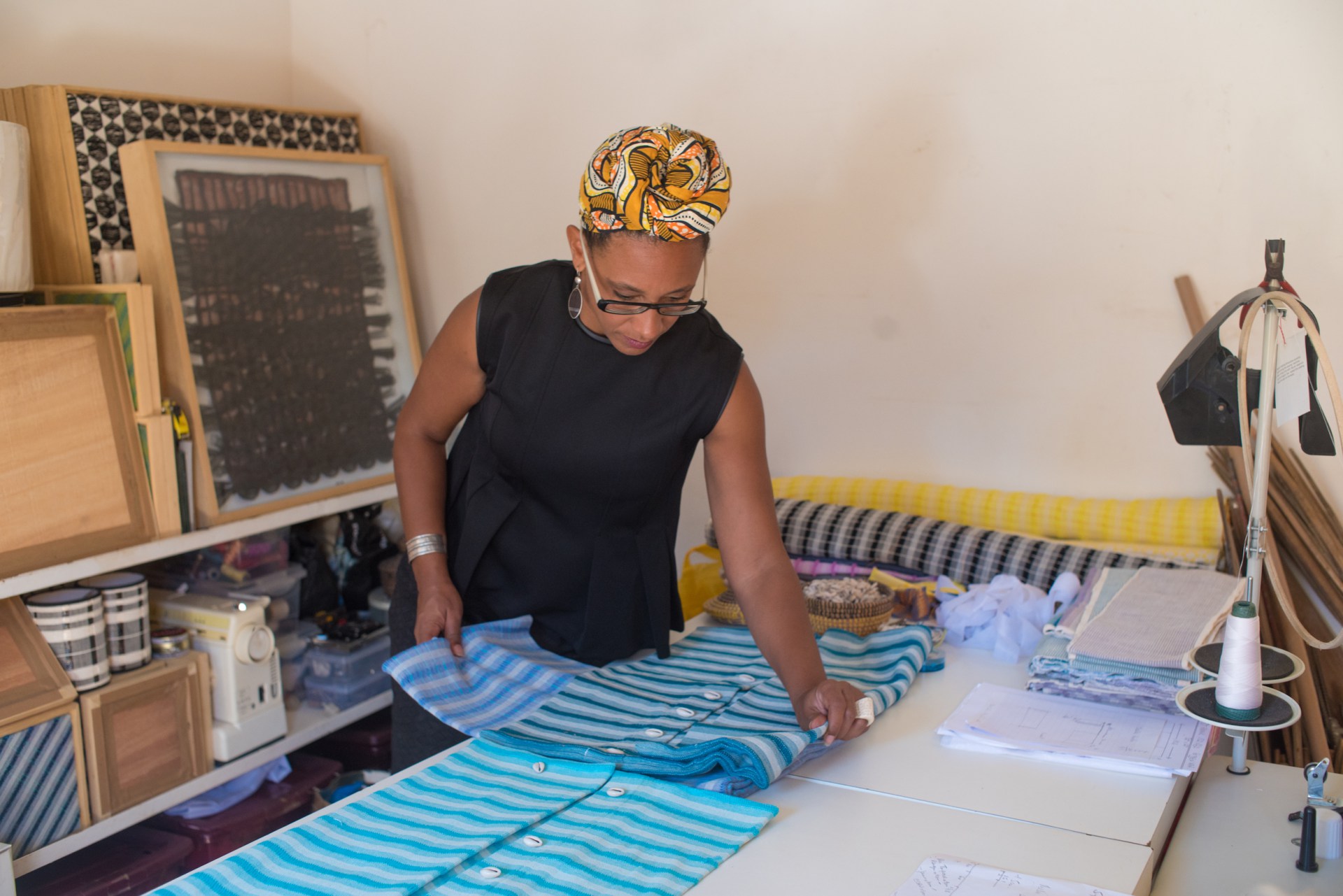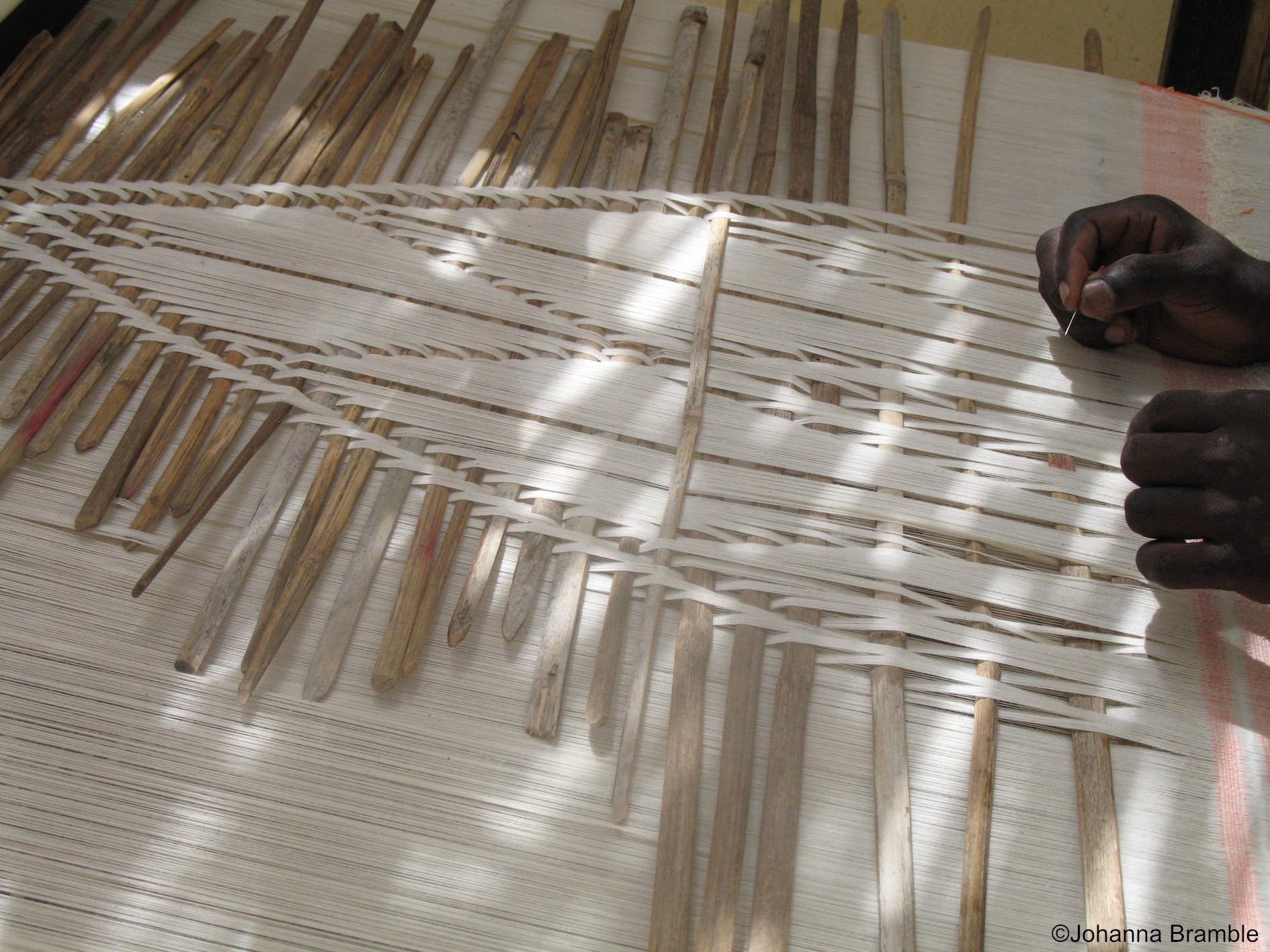Johanna Bramble
Weaving is a universal language
My name is Johanna Bramble and I’m a textile designer. I have been based in Dakar, Senegal, for ten years now. I have a company and we mainly make handwoven textiles using the traditional Senegalese technique: a combination of two people, the weaver and an assistant working together, to make these beautiful patterns appear, it’s like a work of complicity.
The fabrics we are making are for interior design, we make cushions and bedcovers, we work for professional customers and also for individuals who want to have their own handwoven fabrics for their interiors. We have also sometimes developed collaborations with fashion designers so that they can use our fabrics for their collections. All the fabrics are cotton-based but I like to add different materials. The cotton is from Senegal and the other fibers are from all over the world: we use viscose, copper, silk and paper, because I really like to play with the interaction between the patterns, the thread and the yarn I’m using.
In this work I try to find a balance between traditional ways of weaving and all my different experiences. In Paris I used to work for haute couture, I used to work for industrial companies in France, with artists making huge tapestries, so in my work I try to find a balance between tradition and contemporary work.

You arrived in Florence during Pitti Filati - the international fair for the textile and knitwear industry - how did your work evolve since then?
This fair takes place twice a year, and it was amazing to see the colors, the spinnings for the new Spring season, I made different connections, collecting yarns, and I had a specific contact with an amazing company that is making yarn out of paper and they weave amazing fabrics with this yarn. I was interested in their technique and we finally got in touch and I was able to see the way they work. It was really inspiring.
What is the potentiality of paper yarn for you at this very moment?
Working with cotton, I can really add a new vision to the fabric, I mean, not only talking about the touch because you can feel this paper material, but also in visual terms. I think weaving is a language of its own and I really like to think of paper as a metaphor. In French there are many links between weaving and writing – la trame d'une énigme for instance – for me textile is a language, a kind of clin d’oeil to use this material and to introduce it into weaving. Yes, it gave me many ideas for taking this technique to another level.
Talking about language, you talk about weaving as a universal language, beyond borders, can you elaborate on this?
You can find textiles all over the world, there are many different meanings depending on the country where the weaving is done and you can find the identity of a country and of different people in textiles. I used to work in India, and in every different region there’s a specific textile tradition - it can be weaving, it can be embroidery - and for each identity there is a special language corresponding to the place where the fabric is made. If it’s made in the desert or in a wet environment, the fibers will change and you can feel the difference. I always work with different weavers and I always tell them that weaving is the extension of their soul and they put a special energy into it some days, but sometimes you may not feel good and you can transmit this feeling into your weaving. Depending on this energy and on the fibers you use you can give a different identity to your weaving. This is true in Senegal but it’s the same all over the world . . . .
And we all have a special tie with textiles. We all wear clothes, and fabrics are close to our skin. I’m talking about a direct and intimate relation with textiles. Sometimes it’s fun because, when I introduce myself and talk about my work, people always give me feedback on their feelings about textiles; in their memory clothes remind them of old family stories which are very intimate for them. It’s also this aspect of universalism that I’m interested in, because we are all linked to textiles....

This conversation was recorded in Florence, last February 2018. It's produced in collaboration with Villa Romana, in the frame of SEEDS FOR FUTURE MEMORIES, a residency exchange project developed by Villa Romana and Thread to link the two ends of migration at the two reference locations: Sinthian / Tambacounda and Florence. Along 2018, 13 artists will be travel and work between Italy and Senegal: Johanna Bramble is one of them.
To read the full interview, visit the website www.seedsforfuturememories.com.
Here you can listen to Radio Papesse's radio edit.
